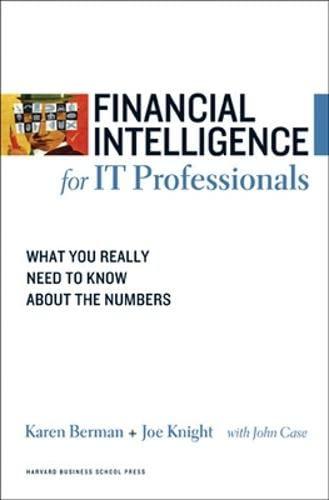Question
1) Which one of the following statements is correct? A) The standard deviation of the returns on Treasury bills is zero. B) Large-company stocks are
1) Which one of the following statements is correct?
A) The standard deviation of the returns on Treasury bills is zero.
B) Large-company stocks are historically riskier than small-company stocks.
C) The standard deviation is a means of measuring the volatility of returns on an investment.
D) A risky asset will always have a higher annual rate of return than a riskless asset.
E) There is an indirect relationship between risk and return.
2) Christine owns a stock that dropped in price from $43.80 to 39.49 over the past year. The dividend yield on that stock is 1.8 percent. What is her total return on this investment for the year?
A) -11.31 percent
B) -10.49 percent
C) -9.91 percent
D) -9.59 percent
E) -8.04 percent
3) Jack owned a stock for five months and earned an annualized rate of return of 6 percent. What was the holding period return?
A) 2.37 percent
B) 2.42 percent
C) 2.46 percent
D) 2.64 percent
E) 2.72 percent
4) An asset has an average annual historical return of 11.6 percent and a standard deviation of 17.8 percent. What range of returns would you expect to see 95 percent of the time?
A) -41.8 to + 65.0 percent
B) -34.4 to + 53.6 percent
C) -24.0 to + 47.2 percent
D) -6.2 to + 29.4 percent
E) -5.4 to + 41.0 percent
Step by Step Solution
There are 3 Steps involved in it
Step: 1

Get Instant Access to Expert-Tailored Solutions
See step-by-step solutions with expert insights and AI powered tools for academic success
Step: 2

Step: 3

Ace Your Homework with AI
Get the answers you need in no time with our AI-driven, step-by-step assistance
Get Started


